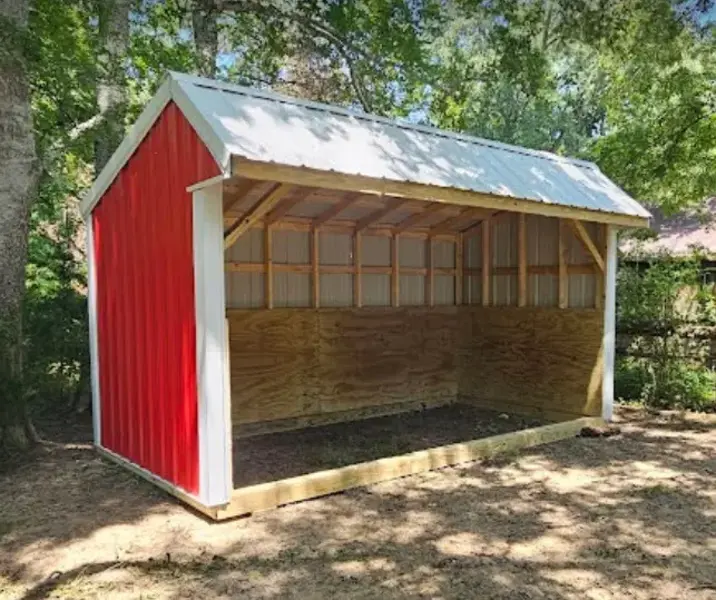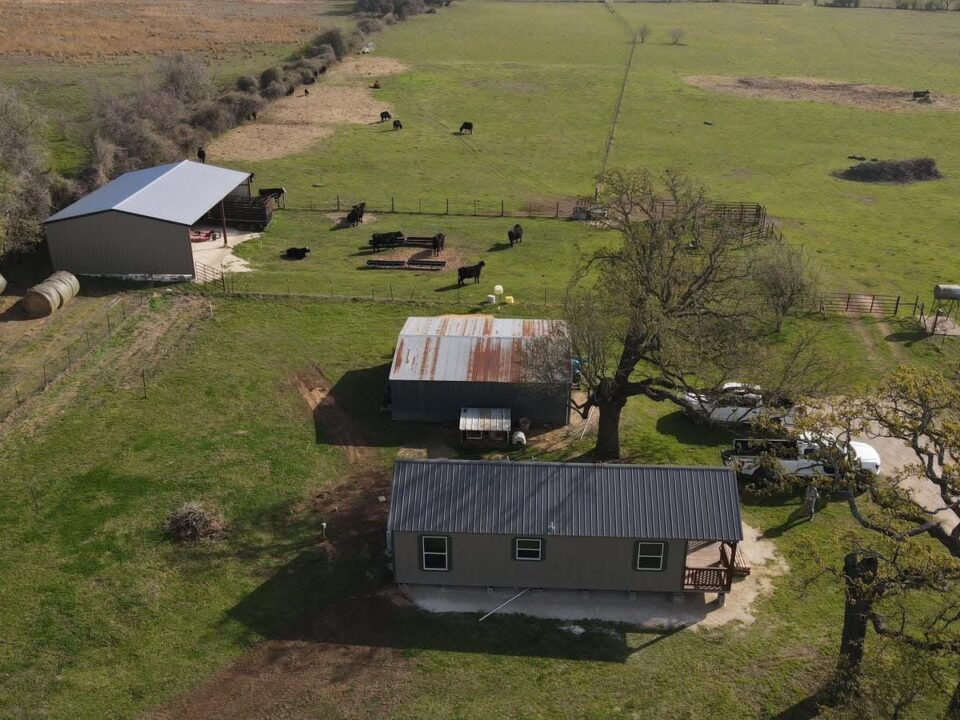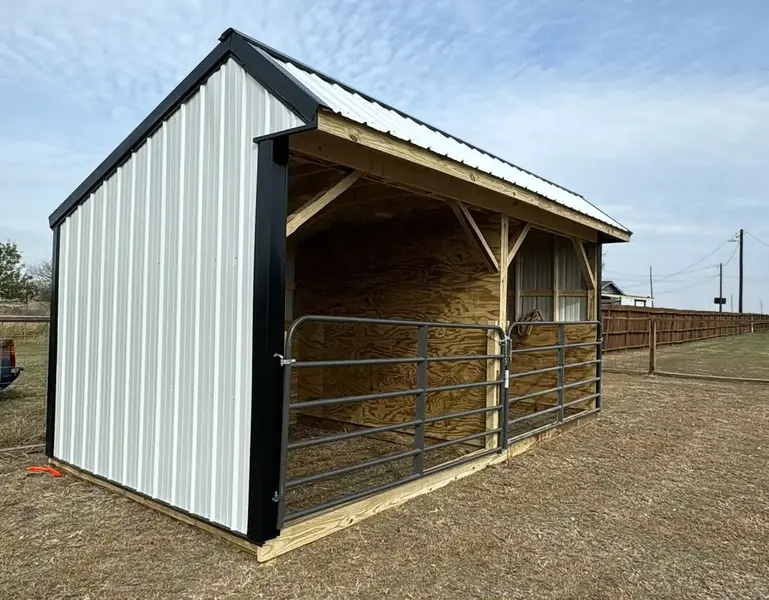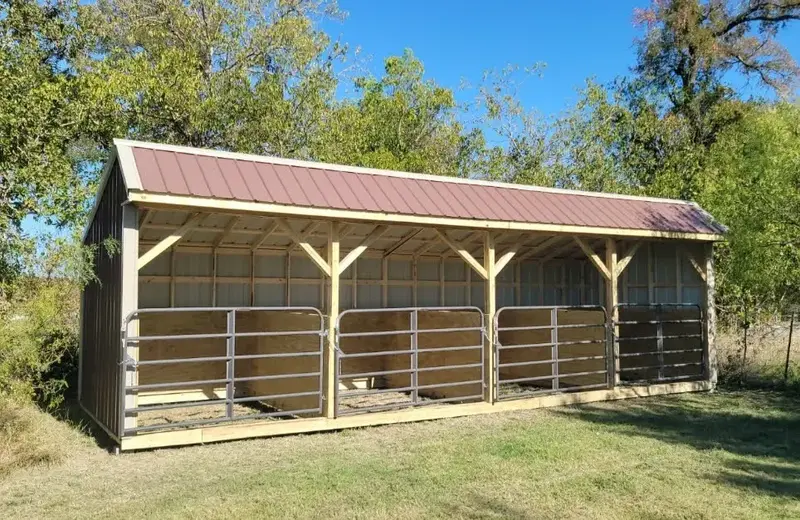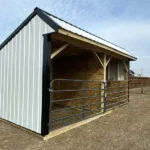
Why Portable Animal Shelters Make Smart Farm Solutions
June 20, 2025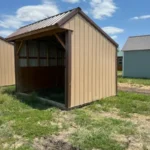
Predator-Proof Animal Shelter: Protect Your Animals from Predators
June 22, 2025The Importance of Ventilation in Animal Shelters 🌬️
Fresh Air Means Healthy Animals
When most people think about building an animal shelter, they focus on walls, roofing, and durability—and while those are critical, one factor often gets overlooked: ventilation in animal shelters. Proper airflow is one of the most important design elements in any animal shelter. Without it, even the strongest structure can turn into a dangerous, unhealthy environment. 🐄🐶🐐
Whether you’re housing horses, livestock, dogs, or poultry, good ventilation directly impacts your animals’ health, comfort, and long-term well-being.
Why Poor Ventilation Causes Health Problems
Animals generate heat, moisture, and waste as part of daily life. Without sufficient airflow, these byproducts quickly build up inside the shelter, creating:
High humidity levels
Ammonia buildup from urine
Increased bacterial growth
Higher risk of respiratory infections
Overheated animals in summer months
Even in winter, stagnant air can cause more harm than cold temperatures alone. Moisture trapped inside a poorly ventilated shelter increases the risk of pneumonia, hoof infections, and joint issues. Animals kept in stuffy, closed spaces experience higher stress levels, making them more vulnerable to illness year-round.
👉 See how investing in quality shelters saves money long-term.
How Ventilation Keeps Animals Comfortable Year-Round 🌦️
A well-designed animal shelter allows for continuous air exchange while still blocking out harsh weather. The goal is simple: let stale air out and bring fresh air in—without creating drafts that chill animals.
In summer, ventilation helps prevent heat stress by releasing hot air buildup. In cooler months, it controls moisture and ammonia levels while maintaining safe, dry conditions.
Key benefits include:
Lower respiratory infections
Stronger immune systems
Reduced parasite growth
Drier bedding and flooring
Lower vet costs over time
👉 Learn how quality shelters prevent costly vet bills.
Ventilation Solutions We Build Into Every Shelter
At Wolf Valley, we design each animal shelter with your animals’ respiratory health in mind. Our ventilation features include:
Open gables and roof vents for natural airflow
Proper eave overhangs to reduce moisture entry
High ceilings to prevent heat and ammonia buildup
Adjustable openings for seasonal airflow control
Proper shelter placement to catch prevailing breezes without exposing animals to direct drafts
We balance protection with breathability, ensuring that your shelter remains dry, fresh, and safe in every season.
👉 See how choosing the right shelter size makes a difference.
Which Animals Benefit Most from Good Ventilation?
The truth is: all animals benefit from well-ventilated shelters. But certain species are especially vulnerable to poor airflow:
Horses: Prone to respiratory conditions like heaves (equine asthma)
Cattle: Susceptible to pneumonia in humid or cold, damp shelters
Goats and Sheep: Sensitive to hoof rot in moist environments
Poultry: Extremely vulnerable to ammonia buildup and respiratory stress
Dogs: Overheat easily without airflow, especially in warm climates
Whether you’re housing one animal or one hundred, proper ventilation is non-negotiable.
Don’t Let Ventilation Become an Afterthought
Too many farm owners discover ventilation problems only after costly health issues arise. The good news? You can prevent these problems with thoughtful design upfront.
A strong roof and solid walls will protect your animals from wind and rain—but it’s ventilation that creates a safe, breathable environment inside. Without it, you’re only solving half the problem.
Build It Right From The Start 🛠️
At Wolf Valley Buildings, we believe every detail matters—because your animals deserve more than just shelter. They deserve clean air, dry bedding, and the healthiest environment possible.
Contact Wolf Valley Buildings today to start designing your properly ventilated animal shelter. Protect your animals’ lungs—and your investment—for years to come.
External Link:

